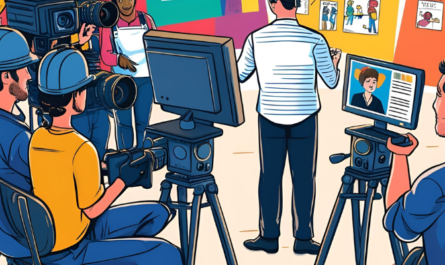Art has always been a powerful form of human expression. From ancient cave paintings to digital masterpieces created on tablets, the tools may have changed, but the heart of art remains the same: to communicate, inspire, and connect. Today, the debate between digital art and traditional art is more relevant than ever. Each form offers unique benefits, challenges, and cultural impacts that shape how we create and perceive art in the modern age.
What is Traditional Art?
Traditional art refers to artistic works created using physical mediums and manual techniques. It includes painting, drawing, sculpture, printmaking, and crafts made with tools like brushes, pencils, clay, and canvas. Rooted in centuries of cultural expression, traditional art emphasizes hands-on creation and often reflects regional heritage, beliefs, and history. Unlike digital art, it produces tangible, one-of-a-kind pieces that age naturally over time. Traditional art is widely celebrated in museums and galleries and is often associated with authenticity and craftsmanship. It remains a foundational pillar in the world of art, continuing to inspire new generations of artists globally.
Traditional art refers to visual works created using physical media such as:
- Paint (oil, acrylic, watercolor)
- Charcoal and pencil
- Clay and sculpture materials
- Paper, canvas, wood, and fabric
This method of art has been practiced for centuries and remains a cherished craft for many artists and collectors.
What is Digital Art?
Digital art is a form of artistic expression created using digital technology and electronic tools. It includes illustrations, animations, 3D models, photo manipulation, and designs made with software like Adobe Photoshop, Procreate, and Blender. Artists often use tablets, styluses, or computers to produce their work, allowing for precise control, easy editing, and limitless creative possibilities. Digital art can be shared instantly online and is widely used in fields like gaming, advertising, film, and web design. With the rise of NFTs and virtual platforms, digital art is reshaping how art is created, viewed, and sold in today’s interconnected world.
Digital art is created using digital technology, typically with tools such as:
- Drawing tablets and styluses
- Software like Adobe Photoshop, Illustrator, Procreate, or Krita
- AI tools, 3D rendering software, and photo manipulation platforms
Digital art spans everything from illustrations and animations to NFTs and interactive installations.
Pros and Cons of Traditional Art
Pros:
- Tactile Experience: Artists feel the brushstrokes, texture of the canvas, and smell of the paint.
- Original Pieces: Each artwork is unique and can have high market value.
- Cultural Heritage: Traditional art is deeply tied to cultural identity and history.
- No Tech Required: No need for power, software, or updates.
Cons:
- Cost of Materials: High-quality tools and canvases are expensive.
- Limited Editing: Mistakes can be hard or impossible to fix.
- Storage and Preservation: Vulnerable to damage over time.
- Accessibility: Requires space and resources.
Pros and Cons of Digital Art
Pros:
- Endless Tools and Features: Experiment freely with brushes, effects, and layers.
- Easier Corrections: Undo buttons and layers simplify edits.
- Instant Sharing: Share artwork globally in seconds.
- Environmentally Friendly: No physical waste or chemicals.
- Integration with Technology: Essential in media, games, and design.
Cons:
- Tech Dependence: Needs hardware, electricity, and software.
- Learning Curve: Digital tools can be complex.
- Authenticity Concerns: Easily duplicated, raising copyright issues.
- Perceived Value: Often seen as less “authentic.”
Cultural Impact of Both Art Forms
Traditional Art’s Role in Culture
Traditional art is a pillar of human history and culture, connecting generations through storytelling, religion, and craftsmanship. Museums and galleries preserve this legacy around the world.
Digital Art in the Modern World
Digital art reflects our modern, tech-driven world. It plays a crucial role in entertainment, advertising, NFTs, and even virtual reality experiences.
Bridging the Gap
Many artists combine both forms—starting with sketches and completing their work digitally. This hybrid approach merges history with innovation, showing that creativity has no boundaries.
Conclusion: There’s Room for Both
Rather than comparing digital and traditional art as competitors, it’s more productive to see them as complementary tools for artistic expression. Each has its place in our creative ecosystem. What truly matters is the message, emotion, and impact behind the art, regardless of the medium.
Call to Action
Are you an artist or art lover? Share your thoughts in the comments below:
- Which form do you prefer—digital or traditional?
- Have you tried both?
- How do you think art will evolve in the future?
Let’s keep the conversation alive and celebrate the diversity of artistic expression around the world!


